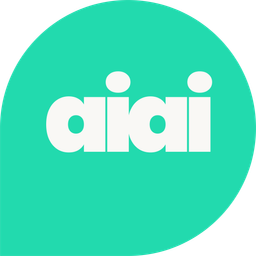Generative AI is buzzing in the tech world, opening doors to craft new content like text, images, or music. As more fields hop onto the generative AI bandwagon, getting a grip on the challenges that come with it is becoming crucial. This article dives into the snags users hit when playing around with their chosen generative AI tools, all based on our Generative AI report.
We wanted to know what was the main challenge with respondents’ number one generative AI tool.
As you can see below, biases, errors, and limitations of generative AI were highlighted as the main concern when using the technology (36.1%), followed by a limited information pool (19.5%) and generative AI data security concerns (16.5%) in second and third place, respectively.
Diving deeper below, we'll be looking at each challenge, spotlighting the ethical tight spots, ownership wrangles, data security shaky grounds, and the ties to third-party platforms. In this article, we’ll look at the 7 mentioned generative AI challenges:
- Biases, errors, and limitations of generative AI
- Generative AI vs. IP rights
- Generative AI data security
- Dependence on the 3rd party platform
- Limited information pool
- Costs associated with premium versions
- Workforce morale
Biases, errors, and limitations of generative AI
Should the data used to train models have biases, the created content will reflect these. This can be a big concern when it comes to real-world applications in law enforcement, hiring processes, and healthcare.
There are also ethical concerns when it comes to generative AI, as it can create or amplify harmful stereotypes. The model outputs can be unpredictable at times, and this can lead to errors or even impropriate content generation.
Generative AI vs. IP rights
As generative AI creates artworks, written content, and music pieces, the question arises: who owns the rights to this content? The AI developer, the user? This can be a big point of contention when using the models.
Similarly, generative AI can produce content that is very close to existing copyrighted work and lead to legal disputes, or even recreate products or content based on existing ones and undermine the value of the original creations.
Generative AI data security
When generative models are trained on vast datasets, they can unintentionally memorize personal or sensitive information. And, when generating content for other users, there’s a possibility that models will leak this information.
Models can also create false data or manipulate existing data, which presents challenges in guaranteeing data integrity – particularly in critical sectors like finance or healthcare. And, generative AI models can be susceptible to adversarial attacks, a slight deviation from the input can lead to models producing incorrect outputs.
Dependence on the 3rd party platform
There can be an over-reliance on specific platforms, meaning that migrating to other platforms or solutions becomes difficult. Should these third-party platforms have outages or discontinuations, users who depend on them can face serious disruptions.
Relying on these external platforms can result in databeing stored in locations that are subject to different law regulations – or even to data being accessed by unwanted parties.
Limited information pool
Generative AI models are only as good as the data used to train them; if they’re trained on limited datasets, outputs can lack diversity or be highly inaccurate. Additionally, artificial intelligence models have a “knowledge cutoff”, meaning that they aren’t aware of new information or current events unless consistently updated.
Costs associated with premium versions
Premium versions of generative AI platforms can often have additional or advanced features that make work simpler and more efficient. They can, however, be expensive, which places them out of reach for small businesses or individuals.
Alongside premium versions, there can also be hidden costs associated with data storage, computation, or other infrastructure needs.
Workforce morale
With the quick adoption of AI, there’s been a feat that it could replace certain job roles, especially generative AI, leading to reduced job security or unemployment. Employees might also be wary of AI-generated content and doubt its reliability and accuracy.
As this adoption grows, so does the need for upskilling. Employees could feel overwhelmed or even left behind if they aren’t provided with adequate training.

Bonus: Honourable mentions
Respondents also mentioned a few other challenges that their first generative AI tool of choice has. A few of these are:
- Its speed
- Its availability
- Lack of speech recognition
- How hard it is to find someone who knows how to use the tools well enough to get the most out of them.
- Knowing about what’s out there since there are so many tools available.
- The cost of initial development is more than expected.



 Follow us on LinkedIn
Follow us on LinkedIn



